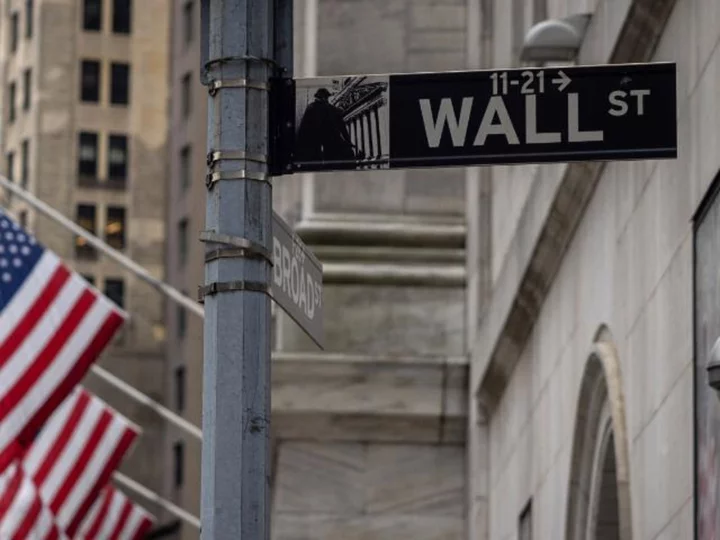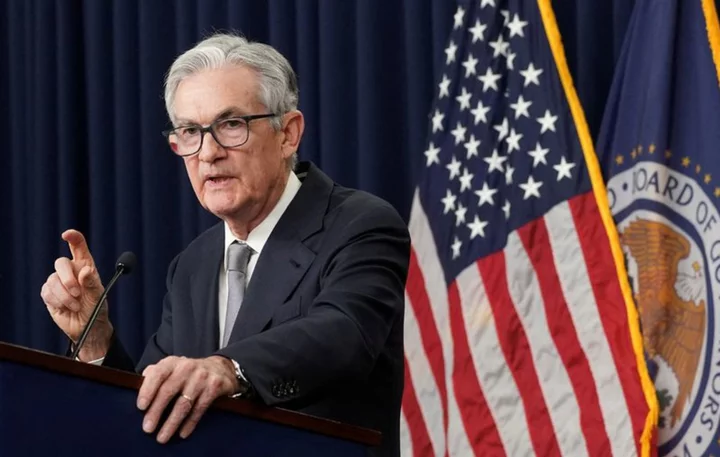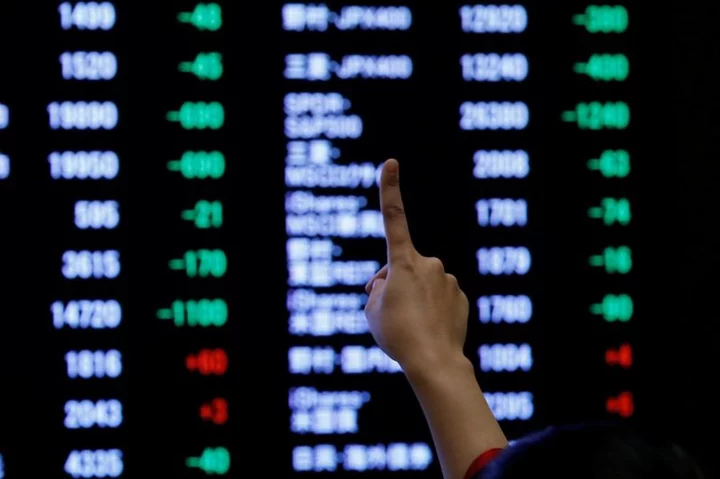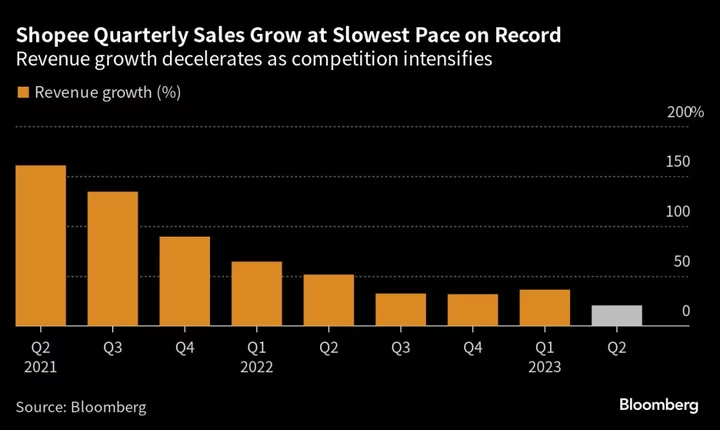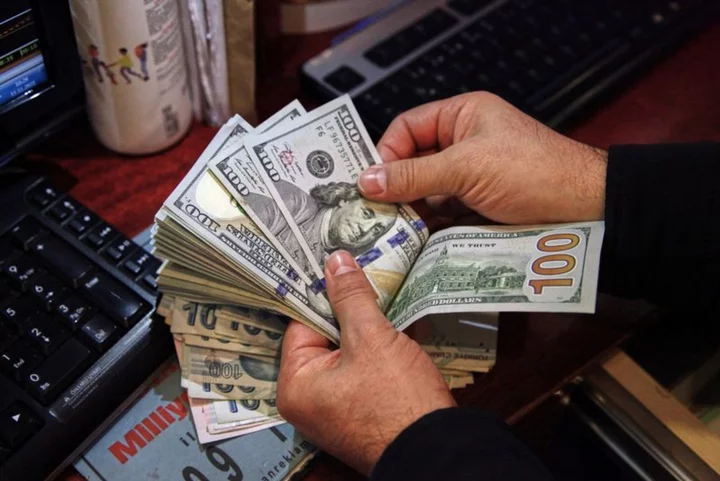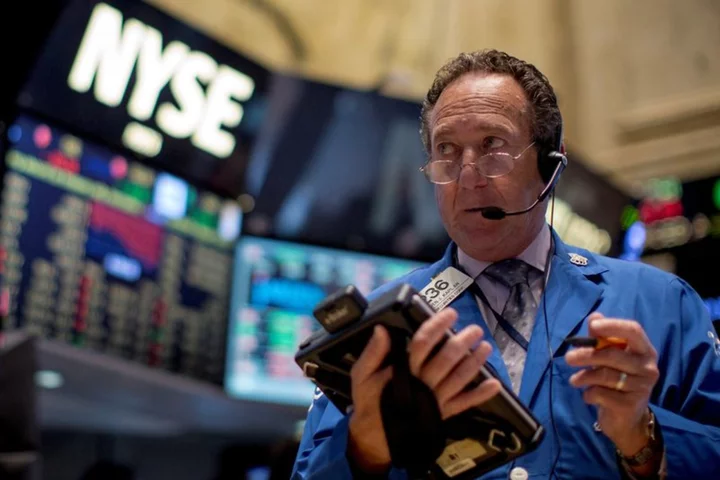The first half of 2023 has been a strange and volatile one for markets. Investors have had to contend with the possibility of recession, a banking crisis, interest rate hikes (and pauses), sticky inflation, and a softening US economy.
All the while, stocks were climbing out of a bearish phase into a bull market.
So what does the rest of the year have in store for Wall Street? If it's anything like the first half of the year, it's anybody's guess.
Every June, just about every US financial institution releases its mid-year outlook, outlining the themes that its analysts believe will dominate the latter months of the year. Below are four of the most prevailing trends they're prognosticating.
Recession obsession: Epic "will-they-or-won't-theys" like Rachel and Ross, Mulder and Scully, and Sam and Diane have nothing on the two-year flirtation between the US economy and recession.
Unfortunately, Wall Street is unlikely to receive the clarity it seeks anytime soon.
"Investors are on edge — eager to protect their unexpected gains. Like Vladimir and Estragon from Samuel Beckett's play Waiting for Godot, investors are anxiously awaiting the titular recession that may or may not arrive this year," wrote State Street analysts Michael Arone and Matthew Bartolini.
Still, economists at the Federal Reserve believe that a recession seems more likely by the end of 2023 than not. The possibility of a downturn will be a key theme for traders through the latter half of the year as threats to the economy like tighter credit, diminished savings, more layoffs and banking turmoil continue, said JPMorgan analysts in their mid-year outlook.
"Historically, there has been a natural order to economic cycles," wrote Darrell Cronk, president of the Wells Fargo Investment Institute. "A rapid rise in inflation has been followed by the Fed raising interest rates, which has often created conditions that lead to a bear market and then ultimately a recession."
This order, he wrote, "is once again at play."
Market disconnect: "The market is trying to reconcile two very different scenarios — one where the US economy remains fairly strong and the Fed doesn't cut rates, and one where the Fed has to cut by several percentage points," said Arif Husain, head of international fixed income and chief investment officer at T. Rowe Price.
That might explain an increasing disconnect between market reactions, policy actions taken by the Federal Reserve and economic data.
There was plenty of bad news in the first half of 2023 that could have derailed markets. The Fed raised interest rates at three of its meetings this year, corporate earnings have declined for two consecutive quarters year-over-year, a regional banking crisis led to the collapse of Silicon Valley Bank, Signature Bank and First Republic, debt ceiling negotiations in Washington nearly led to a default on US government debt and geopolitical tensions in Europe and Asia are ongoing.
But the S&P 500 is up nearly 14% so far this year.
"It must be maddening for market prognosticators to watch stocks and bonds continue to climb the proverbial wall of worry. The widening gap between financial assets' performance and underlying risks underscores the notion that the economy is not the market and vice versa," wrote State Street analysts.
For the second half of the year, they wrote, "the range of potential market outcomes has never been wider."
Looking abroad: One common theme across mid-year market forecasts is the search for safe investment havens outside of the United States.
It's a strange theme for some investors: Over the last 10 years, the US stock market has outperformed Europe by about 100% and China by 175%, according to a JPMorgan Chase analysis. Because of that, they said, over two-thirds of their US clients have no exposure to China and half of US clients are very minimally invested in Europe.
But "Europe has outperformed the United States over the last 12 months, and although China has lagged, we see reason to believe the tide could be turning," they write.
Wells Fargo analysts also said that even though much of Europe has fallen into recession, European markets have "reached an inflection point."
Trading abroad is fairly simple as nearly every major US financial institution offers a smattering of global equities funds — some of those offerings are unhedged to the US dollar, which means they'll be denominated in a foreign currency. About 60% of global stocks are listed in the United States and about 40% of equities are listed elsewhere; a well-hedged portfolio could have the same distribution.
AI boom: Wall Street has a lot to worry about, but there's at least one source of market euphoria: artificial intelligence.
Expect AI to continue to drive investment in a range of tech sectors, including semiconductors, memory and cloud storage, said Justin Thomson, head of international equity at T. Rowe Price.
It will also provide another big boost to big tech, he noted.
"AI programs also require expensive training," he said. "All this plays to the strengths of the largest tech platform companies, which have the resources to develop new AI applications and/or refine existing ones."
The boost from AI could defy bubble worries, said Liz Ann Sonders, managing director and chief investment strategist at Charles Schwab.
"As to whether AI represents a bubble, similar to the internet/dot.com era of the late-1990s, there is some good news," she wrote in her mid-year forecast. "So far, the AI euphoria has been concentrated in a small subset of stocks, which are directly benefiting from the technology (think early 1990s, not late 1990s), and more reasonable valuations."
Titanic tourism is a thing, and it's dangerous
A submersible carrying five people to see the wreckage of the Titanic at the bottom of the North Atlantic Ocean is still missing despite a massive search operation.
The vessel belonged to tourism and research company OceanGate Expeditions, which offered eight-day missions to explore the Titanic more than 13,000 feet below the ocean's surface. The experience cost $250,000 per person, according to the company's website.
Extreme tourism has become a growing trend among thrill-seekers looking for an adrenaline rush, pushing the boundaries of conventional travel and, sometimes, of safe travel, reports my colleague Samantha Delouya.
OceanGate Expeditions is just one of several companies that cater to demand from private individuals wanting to explore the seas and even the seemingly unreachable depths of the world's oceans.
Many ultra-luxury excursions are pricey because they are high risk, which means a lot of expensive, careful preparations.
Some are so unique that they pose a regulatory challenge. For example, the missing Titan submersible is not subject to government regulations from independent groups that set safety standards because the technology is so new and hasn't yet been reviewed, the tour operator claims.
It's not just deep-sea exploration that carries dangers, though. The US Congress has a regulations moratorium on commercial human spaceflight, according to the Federal Aviation Administration, meaning that government safety regulations do not apply to the spacecraft designed by Virgin Galactic, Blue Origin or SpaceX.
Currently, paying customers who travel to space must sign "informed consent" forms to accept any danger that might happen during the mission.
Satisfying your sweet tooth is about to get more expensive
If you have a sweet tooth, take note: Cocoa prices have been soaring — and that could drive chocolate prices higher.
Higher prices can be helpful for struggling cocoa farmers. But those prices, along with high prices of other key chocolate ingredients, might not be great news for shoppers watching their budgets, reports my colleague Danielle Wiener-Bronner.
So far this year, cocoa futures have risen about 21%. As is often the case, higher prices are being driven by demand exceeding supply.
This season, cocoa yields are underwhelming, likely due to crop disease and heavy rains. And next season, forecasters are expecting another deficit because of El Niño, a naturally occurring phenomenon in the tropical Pacific Ocean, which usually brings warmer global temperatures — poor conditions for growing cocoa.
Meanwhile, demand has stayed strong, particularly in Europe and Asia, noted Paul Joules, a commodity analyst for Rabobank who focuses on cocoa and dairy markets.

